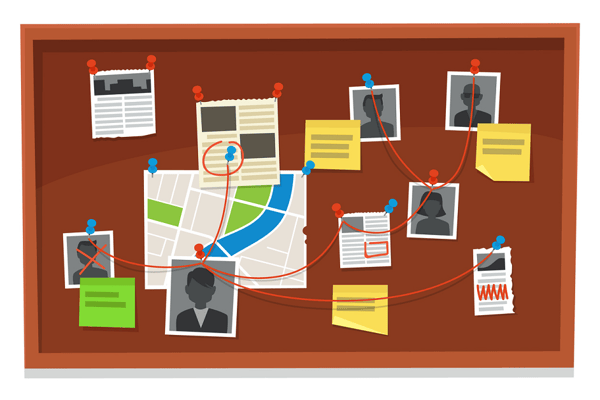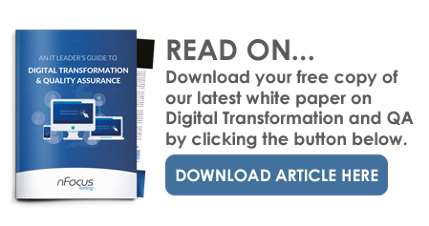Integration of Tracking, Tracing, and Testing
Today we welcome back Jane Kelly who dives into the fascinating world of Track & Trace.
Track & Trace has been heavily reported on in the news and it has made me think about some of the synergies with Software Testing. Tracking can be thought of in terms of the emerging path of what is being analysed, where its current state is, and where it is likely to end up. Like testing, tracking requires many different measures to provide value.

To begin with, we need a purpose or objective for tracking, to know what we are working towards. We also need a subject area data item or a set of subjects to be tracked. We need to identify what attributes to track, which to disregard and where to start and stop measuring.
It's vital to understand the different types of data and which processes are to be applied to each type. If data is linked it will need extra careful planning to understand the dependencies and impact of this. As such, analysis of data and the integral data relationships are key.
We need to understand ahead of the activity how we can accurately capture the data. We must consider the possibility of human error and technical difficulties, it's imperative that we consider the interfaces between the journey of the data capture, where and how it moves through its journey and what it's final tracked destination will be.
Data owners and handlers must be accountable for data they are entrusted with. It must only held for its intended purpose and for a specific length of time. You probably won’t have escaped noticing the importance of data privacy, with GDPR and all related areas of concern, such as storage, owners, security, transit of data, authorisation, data sharing, editing, data use, data handling and encryption. So, data privacy, trust and perception of data handling are all hot topics and need careful management due to sensitivity and data laws and personal privacy.
There’s certainly been some interesting debate when considering a personal right to privacy versus the protection of international health! We know that data can have transitional states, which when studied and processed in the correct way can give very useful information. This information can be used to make policy decisions, business decisions and impact large numbers of people as we have seen evidence of recently. The result can potentially be very positive and provide benefit, the reverse can also be true. We have all seen some of the difficulties of data handling and how that can go wrong and affect confidence, trust and cooperation of the masses.
For the first time, ordering food and drink has seen many people hand over the name and contact information of at least one member of the party. How do you feel about this? Will it become a new ‘norm’ or does it put you off going out to eat?
When we collate data, if it is organised in the right way, we can often see patterns or glean useful information on inference, early trends, or indicators. This leads to another related area, namely reporting. It is vital to get accurate reporting and consider the value, necessity, density and breadth of content as well as the audience, method of dissemination, format, channels and frequency of reporting. We will all know people such as friends and colleagues or family members that differ in what they expect and need to see. High-level or deep-dive, textual or visual, graphs, pie charts, tables, or scatter grams can all be useful in conveying information.
We need to consider accessibility to accommodate people who are deaf and/or blind or have other needs which means that information must be formatted in a different way or several ways, whilst retaining data integrity and consistency.
It was particularly notable how the explanation of the ‘R’ value for Covid-19 was communicated on mainstream TV, to visually demonstrate contagion rates using simple visual symbols to represent people and how rapidly the spread of the virus could infect.
Invisible data was also an issue – how to track and trace anomalies where data subjects do not identify in the same way, asymptomatic people or invisible carriers. We sometimes have impacted test results where root cause cannot be easily traced.
Tracing is more concerned with where the data has come from, what stages and destinations it has passed through and where it began. We need to carefully consider the origins of data and where data has moved from and to, so we can investigate the movement of data and signposting, data exchanges, data changes, clues, footprints, trend analysis and relational data with regard to demonstrable results, which may be construed as evidence, unless conflicting information is found or the results are misinterpreted.
There are often political ramifications resulting in disseminating information, which we have seen on multiple occasions during our Covid-19 crisis. This happens in project delivery also, but on a much smaller scale. So, we can easily see many pitfalls and complexities when we consider data analysis, recording, processing analysing and interpretation of data.
We know that if we collaborate on methods, plan collectively and agree priorities ahead of the activity, we are more likely to achieve a better outcome. We see this in every delivery throughout testing. We collate data and plan activity to decide what and how to track, trace, test and who needs to be involved at each stage. We assess risk and data handling and agree on what to do when things don’t go as planned. Collaboration within any project delivery is key! This is because the different parts of delivery will each have their own objectives, needs, risks, issues, dependencies and they all need to work together and be informed about the things that may impact delivery or the people, cost and time required to achieve the result.
Testing often doesn’t go as planned. But if we have experienced personnel, we ask the right questions of the right people and collaborate at appropriate times, we can be confident in achieving good results! DevOps is a classic example of effective collaboration - taking valued inputs from different stakeholders from start to finish and including what we often call warranty or live support.
We need tracking and tracing, we need collaboration, we need continual collective involvement and analytical reporting to see where we started and where we are heading to get the most effective outcomes.









.png)
